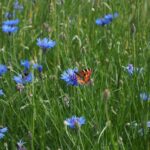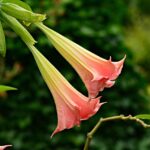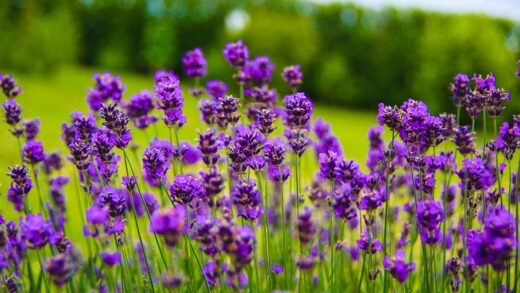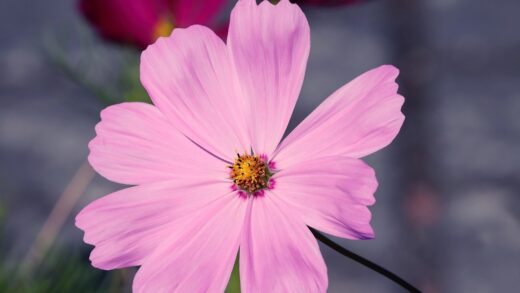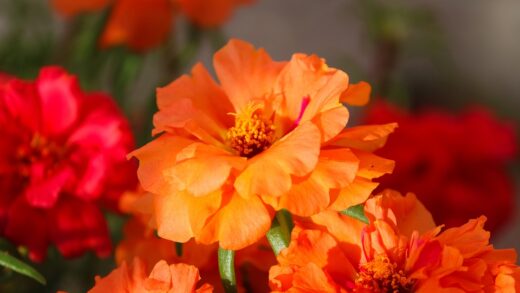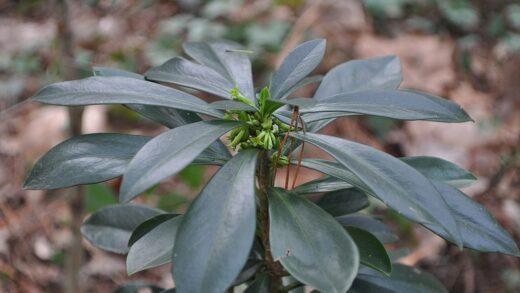The African daisy, also known as Dimorphotheca or Cape marigold, is a plant of stunning beauty originating from South Africa, which conquers gardens and balconies alike with its brightly colored, daisy-like flowers. Thanks to its sun-loving nature, it thrives best in sunny, warm locations and rewards careful cultivation with abundant blooms during the summer months. In its homeland, it grows as a perennial plant; however, in our climatic conditions, where winters can be frosty, it requires special attention if we wish to enjoy it in the following season as well. The question of overwintering, therefore, arises for many gardening enthusiasts, as this wonderful plant, due to its frost sensitivity, would most likely not survive the cold months if left outdoors.
The African daisy is extremely sensitive to frost; even a few degrees below freezing can cause serious damage or even lead to its demise. In its natural habitat in parts of South Africa, winters are mild and frost-free, so the plant survives this period without problems. In contrast, the temperate winters in our regions pose a significant challenge for it. Many, therefore, treat it as an annual plant, saying goodbye to it in the autumn and buying new seedlings in the spring, although with the right conditions, it can be overwintered.
Successful overwintering has numerous advantages. On one hand, next spring we can start the season with stronger, more developed plants that are expected to bloom earlier and more abundantly than freshly bought young specimens. On the other hand, if we have managed to obtain a particularly beautiful color variant or cultivar, we can preserve its genetic material for the coming years in this way. Last but not least, it can also be a cost-effective solution, as we do not have to spend money on new plants every year.
It is important to be aware that although overwintering the African daisy is possible, success is not always guaranteed, and the specific needs of the plant must be taken into maximum consideration. Many mistakenly believe it is enough simply to bring it into a frost-free place, but the reality is more nuanced. The key to success lies in proper preparation, ensuring the correct overwintering conditions, and gradual reacclimatization in the spring, which will be discussed in detail below.
Selecting the Ideal Overwintering Location
One of the crucial points for successful overwintering is the careful selection of a suitable location. Three main factors must be considered: light, temperature, and ventilation. Each of these factors is equally important for the healthy survival of the plants. An inappropriately chosen location, for example, a very dark or overly warm basement, can easily lead to the weakening or even death of the plants, so this step must be given special attention.
More articles on this topic
Regarding temperature, a cool but frost-free space is ideal. Optimally, the temperature during overwintering should range between 5 and 10 degrees Celsius (41-50 degrees Fahrenheit). In a warmer environment, the plant may start to grow prematurely, which can result in weak, elongated shoots, while temperatures near freezing or below can damage the tissues. Relative temperature stability is also important, as large fluctuations cause stress for the plant.
The need for light during overwintering decreases, but the African daisy must not be kept in complete darkness. A bright basement window, an unheated porch, or the southern part of a greenhouse can be suitable. If there is not enough natural light available, the missing amount can be supplemented with grow lights, providing a few hours of daily illumination. The goal is to keep the plant in a vegetative dormant state, but not to let it suffer from a complete lack of light.
Adequate ventilation and air humidity are also crucial for preventing fungal diseases. In overly humid, stuffy spaces, mold or other pathogens can easily appear. Provide fresh air supply through occasional ventilation, but avoid cold drafts. Air that is too dry is also not good, as this can encourage the proliferation of pests, such as spider mites.
Preparing Plants for Overwintering
The preparation of plants for overwintering must begin in good time, before the first serious frosts occur. Usually, this is the period from late September to mid-October, depending on the weather conditions of the particular year. Observe the condition of the plants and the weather forecast so that you can act at the right time. The essence of preparation is to gradually accustom the plants to the changed conditions and to bring them to their overwintering place in the best possible condition.
More articles on this topic
One of the first and important steps is pruning. It is advisable to prune the African daisy before overwintering, by about half or even two-thirds. This reduces the evaporation surface, makes the plant more compact, which facilitates its placement and reduces the risk of diseases. Be sure to remove all dried, diseased, or damaged leaves and shoots, so that only the healthy parts remain.
Before taking the plants to their overwintering place, inspect them carefully for pests and diseases. Pay special attention to the underside of the leaves and the base of the shoots, where pests often hide. If you observe an infestation, for example, aphids or scale insects, treat the plant before bringing it indoors with a suitable, preferably biological, plant protection product. This will prevent pests from spreading in the overwintering place and infesting other plants.
If the African daisies were planted in the garden, dig them up carefully, taking care to damage the root ball as little as possible. Choose a pot appropriate for the size of the root ball, which has drainage holes at the bottom. Use fresh, well-draining potting soil, for example, a mixture of universal potting soil and sand. In the case of potted plants, check the quality of the soil and, if necessary, top it up or replace the top layer.
Care During Overwintering
During overwintering, the care of plants differs significantly from the usual during the growing season, mainly due to the reduced need for water and nutrients. Perhaps the most common mistake one can make is overwatering. In a cool environment, the plant’s life processes slow down, so their water uptake is also reduced to a minimum. Water only when the top layer of soil is almost completely dry, and even then, only moderately, giving just enough water to keep the soil slightly moist.
Nutrient supplementation, that is, fertilizing, is generally unnecessary during overwintering, and can even be harmful. Since the plant is dormant, it cannot use the nutrients, which can accumulate in the soil and damage the roots. Exceptions may be cases where overwintering occurs in very mild, bright conditions, and the plant shows minimal growth; in this case, a very dilute liquid fertilizer solution can be given very rarely, but generally, this is not necessary until spring.
Even though the plants are dormant, their regular inspection is essential throughout the overwintering period. Examine them from time to time to detect any pests that may appear, such as mealybugs or spider mites, which can be more common in drier air. Also pay attention to signs of fungal diseases, for example, gray mold, which can be a consequence of excessive humidity or poor ventilation, and take appropriate measures if necessary.
Care should always be adapted to the current conditions and the state of the plant. If, for example, the temperature of the overwintering place temporarily increases, the plant may need a little more water. Observe the condition of the leaves: wilting can be a sign of lack of water, but also of overwatering. Overwintering is a dynamic process, where careful observation and quick, appropriate reaction are crucial for success.
Spring Awakening and Reacclimatization
With the end of winter, as the days get longer and the temperature begins to rise, it is time to “awaken” the African daisies. This process can usually be started from mid to late March, but always consider the current weather conditions and the end of the frost risk. Look for signs of new life on the plant, for example, small, fresh shoots, which indicate that it is ready to start the growing season. It is important not to rush this process, as a too-early awakening can have negative consequences.
The first step of awakening is to gradually increase the amount and frequency of watering as the plant becomes more active. In parallel, if possible, it can be moved to a slightly warmer, but still bright place. Avoid sudden, drastic changes, as these can cause shock to the plant. Patience is also crucial here; give the plant time to slowly adapt to the changed conditions and restart its life processes.
When there is no longer a risk of night frosts and the daytime temperature consistently rises above 10-15 degrees Celsius (50-59 degrees Fahrenheit), you can begin to acclimatize the plants to the outdoors, so-called hardening off. This is an extremely important process, during which the plants are gradually accustomed to outdoor conditions: stronger light, wind, and temperature fluctuations. Initially, take them out for only a few hours to a sheltered, semi-shady place, then gradually increase the time spent outdoors and the amount of direct sunlight over a period of about one to two weeks.
After successful reacclimatization, usually from mid-May, when the risk of frost has definitively passed, the African daisies can be planted in their final location in the garden or placed on the balcony or terrace. If necessary, repot them into a larger pot with fresh potting soil so they have enough space and nutrients for growth. When planting in the garden, choose a sunny, well-draining location and prepare the soil by incorporating some compost or well-rotted manure.
Common Mistakes and Troubleshooting During Overwintering
One of the most common mistakes made during overwintering, and at the same time the main cause of plant death, is overwatering. In cool, dormant conditions, the water uptake of plants decreases drastically, and stagnant water can lead to root rot. The symptoms of this are yellowing and wilting of leaves, even if the substrate is moist. As a solution, stop watering immediately, let the soil dry out, and subsequently, add water only very cautiously. A well-draining planting medium and drainage holes at the bottom of the pot are of fundamental importance.
Another common problem is an insufficient amount of light, especially its lack, which leads to the elongation of plants, or etiolation. In this case, the shoots become thin, weak, and the leaves small and pale. Although the need for light decreases during overwintering, in complete darkness the plant weakens. If you observe this, try to move the plant to a brighter place or use supplementary lighting with a grow lamp. Etiolated shoots, unfortunately, will no longer strengthen, but they can be removed during spring pruning.
Especially on plants overwintered in heated rooms with dry air, pests such as spider mites or mealybugs can often appear. Their presence can be indicated by fine webs on the leaves, deformations, or a sticky coating. For prevention, ensure adequate air humidity (for example, by placing the pots on trays filled with gravel) and inspect the plants regularly. If you observe an infestation, in milder cases, wiping the pests off with a damp cloth may be sufficient, and in more severe cases, use a soapy water spray or a suitable insecticide.
Occasionally, it may happen that the overwintering plant appears dead, its leaves have fallen off, and its shoots seem dry. However, before giving up on it definitively, it is worth doing a simple test: gently scratch the bark of the stem or a thicker shoot with your fingernail. If you find green, living tissue underneath, then the plant is still alive and, with proper care, it can sprout again in the spring. In this case, be patient and continue minimal watering until it shows signs of life.







